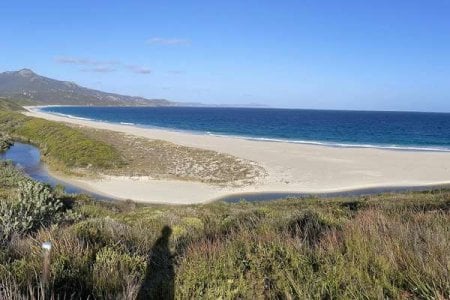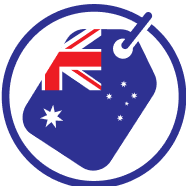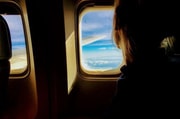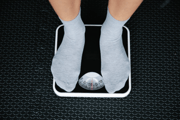'Holy smokes': What researchers found at this remote beach will leave you speechless
By
Maan
- Replies 16
A quiet discovery at a remote Australian beach has recently sent shockwaves through environmental experts and locals alike.
What was thought to be a simple cleanup mission soon revealed something far more sinister.
As the investigation unfolded, the full extent of the find sparked urgent questions about the state of our beaches and the environmental threats that could be closer than we realise.
Australians were urged to be more mindful of their surroundings this long weekend.
The focus was particularly on cleaning up after themselves (and others) along the country's beaches after millions of tiny microplastics were spotted on a popular shoreline.
Earlier in January, researchers from the conservation group Adrift Lab shared images from Bettys Beach, located 50km east of Albany in Western Australia.
Despite the location's remoteness, the team revealed the area was 'covered' in millions of microplastics, nurdles, rope, and 'so many bottle caps'.
'Holy smokes,' the group wrote on social media.
'[It's going to] take us a while to count, weigh, sort and upload the data,' they added, as the researchers, who focus on 'all things adrift in the ocean,' continued their work.
Dr Michelle Blewitt, one of Australia's leading experts on microplastics, stressed the importance of monitoring plastic consumption this Australia Day long weekend.
Blewitt, from the Australian Microplastic Assessment Project (AUSMAP), warned that high winds sweeping across the continent were causing plastics from overflowing bins to be swept into the ocean.
She cautioned that these plastics would likely remain in the ocean for decades.
The number of microplastics currently in the ocean is estimated to exceed 100 trillion, many of which eventually drift ashore.
Blewitt expressed concern that without collective action, the situation would only worsen.
'There are an estimated 174 trillion pieces of microplastics currently in the ocean and what is out there will continually break up into smaller and smaller pieces due to sunlight and wave action,' she shared.
'So, unfortunately this problem is highly likely to get worse rather than better.'
She continued: 'Humans of course can help ... to ensure that we aren’t leaving our rubbish on the beaches and in our waterways.'
The warning proved especially relevant during busy holidays like this one.
Blewitt explained that, living near the beach, she had witnessed overflowing rubbish bins.
The wind blew debris onto sand dunes and beaches, where it would continue breaking into smaller pieces, ready to be ingested by aquatic life—and ultimately, humans.
Microplastics enter the sea in numerous ways, Blewitt explained.
Every time Australians wash their clothes, millions of tiny microfibres are shed, eventually making their way into the ocean.
Once there, these plastics are often consumed by fish and other aquatic life, and when humans eat those species, they too ingest the plastic.
Anything smaller than five millimetres is considered a microplastic, and when it shrinks to less than one millilitre, it becomes nanoplastics, which can even be inhaled.
Blewitt highlighted how much of the waste resembles the natural diet of native animals, making it particularly attractive to wildlife.
Over time, some plastics even acquire a 'smell' that draws in birds and other species, which may mistake the plastic for food and feed it to their young.
'Industrial pellets are what we call primary microplastics and that gets made from virgin plastic into these round objects that look very much like fish eggs,' she explained.
'They're then being consumed by birds, by fish and by invertebrates that are living in the sediment.'
She added: 'When microplastics get out in the ocean, it gets coated in fishy, stinky, bloody smells from the sea, and so it becomes very attractive to birds, and to other species that then consume it and then often feed it to their own young as well.'

With millions of microplastics already in our oceans, how can we take more responsibility to tackle this growing issue? Share your thoughts in the comments.
What was thought to be a simple cleanup mission soon revealed something far more sinister.
As the investigation unfolded, the full extent of the find sparked urgent questions about the state of our beaches and the environmental threats that could be closer than we realise.
Australians were urged to be more mindful of their surroundings this long weekend.
The focus was particularly on cleaning up after themselves (and others) along the country's beaches after millions of tiny microplastics were spotted on a popular shoreline.
Earlier in January, researchers from the conservation group Adrift Lab shared images from Bettys Beach, located 50km east of Albany in Western Australia.
Despite the location's remoteness, the team revealed the area was 'covered' in millions of microplastics, nurdles, rope, and 'so many bottle caps'.
'Holy smokes,' the group wrote on social media.
'[It's going to] take us a while to count, weigh, sort and upload the data,' they added, as the researchers, who focus on 'all things adrift in the ocean,' continued their work.
Dr Michelle Blewitt, one of Australia's leading experts on microplastics, stressed the importance of monitoring plastic consumption this Australia Day long weekend.
Blewitt, from the Australian Microplastic Assessment Project (AUSMAP), warned that high winds sweeping across the continent were causing plastics from overflowing bins to be swept into the ocean.
She cautioned that these plastics would likely remain in the ocean for decades.
The number of microplastics currently in the ocean is estimated to exceed 100 trillion, many of which eventually drift ashore.
Blewitt expressed concern that without collective action, the situation would only worsen.
'There are an estimated 174 trillion pieces of microplastics currently in the ocean and what is out there will continually break up into smaller and smaller pieces due to sunlight and wave action,' she shared.
'So, unfortunately this problem is highly likely to get worse rather than better.'
She continued: 'Humans of course can help ... to ensure that we aren’t leaving our rubbish on the beaches and in our waterways.'
The warning proved especially relevant during busy holidays like this one.
Blewitt explained that, living near the beach, she had witnessed overflowing rubbish bins.
The wind blew debris onto sand dunes and beaches, where it would continue breaking into smaller pieces, ready to be ingested by aquatic life—and ultimately, humans.
Microplastics enter the sea in numerous ways, Blewitt explained.
Every time Australians wash their clothes, millions of tiny microfibres are shed, eventually making their way into the ocean.
Once there, these plastics are often consumed by fish and other aquatic life, and when humans eat those species, they too ingest the plastic.
Anything smaller than five millimetres is considered a microplastic, and when it shrinks to less than one millilitre, it becomes nanoplastics, which can even be inhaled.
Blewitt highlighted how much of the waste resembles the natural diet of native animals, making it particularly attractive to wildlife.
Over time, some plastics even acquire a 'smell' that draws in birds and other species, which may mistake the plastic for food and feed it to their young.
'Industrial pellets are what we call primary microplastics and that gets made from virgin plastic into these round objects that look very much like fish eggs,' she explained.
'They're then being consumed by birds, by fish and by invertebrates that are living in the sediment.'
She added: 'When microplastics get out in the ocean, it gets coated in fishy, stinky, bloody smells from the sea, and so it becomes very attractive to birds, and to other species that then consume it and then often feed it to their own young as well.'
Key Takeaways
- A quiet discovery at a remote Australian beach revealed millions of microplastics, sparking concern about environmental threats and the need for more responsible beach cleanup efforts.
- Researchers from Adrift Lab found Bettys Beach in Western Australia covered in microplastics, nurdles, and other debris, raising alarms about the growing scale of plastic pollution.
- Dr Michelle Blewitt from AUSMAP warned that plastic waste, driven by high winds and overflowing bins, is being swept into the ocean, where it could persist for decades and break down into smaller, more dangerous pieces.
- Microplastics, which enter the ocean from various sources including washing clothes, are consumed by aquatic life and can ultimately be ingested by humans, with some resembling natural food sources for wildlife.
With millions of microplastics already in our oceans, how can we take more responsibility to tackle this growing issue? Share your thoughts in the comments.
Last edited:








